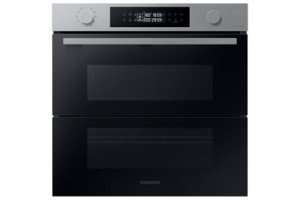The Ultimate Guide to Buying a Built-In Oven
In the world of contemporary cooking appliances, built-in ovens stand out for their smooth combination into kitchen cabinetry, visual appeal, and advanced cooking technologies. They offer a variety of features and a streamlined design, catering to both culinary lovers and everyday cooks. However, choosing built in double oven and hob packages built-in oven can be difficult provided the plethora of options available in the market. This article serves as a detailed guide, highlighting essential considerations when buying a built-in oven, popular functions, and answers to regularly asked questions (FAQs).
Why Choose a Built-In Oven?
Built-in ovens provide many advantages, including:
- Space Efficiency: They are developed to suit existing cabinetry, enhancing kitchen area.
- Visual Appeal: With a variety of styles and surfaces, built-in ovens boost the general appearance of a kitchen.
- Advanced Features: Many come geared up with cutting edge technology, making cooking much easier and more accurate.
- Modification: Built-in ovens can be set up at eye level or listed below counter height, providing versatility based on personal choice.
Secret Considerations When Buying a Built-In Oven
Here are necessary factors to consider before buying:
1. Size and Dimensions
Before selecting a built-in oven, it is vital to measure the available area. Standard built-in ovens typically fall into 2 main categories:
| Oven Size | External Dimensions | Internal Capacity |
|---|---|---|
| Single | 24-30 inches large | 3-5 cubic feet |
| Double | 30-36 inches large | 5-10 cubic feet |
Guarantee that the selected design fits your cabinetry both in width and height.
2. Type of Oven
Built-in ovens come in various types, consisting of:
- Conventional Ovens: Uses heating components above and listed below for standard baking and roasting.
- Convection Ovens: Employs a fan to flow hot air, supplying even cooking.
- Wall Ovens: Installed vertically at eye level for much easier access.
- Steam Ovens: Uses steam to cook food, protecting nutrients and moisture.
3. Fuel Type
Built-in ovens are offered in various fuel types:
- Electric: Often heats up more equally, suitable for baking.
- Gas: Offers instant temperature control, terrific for roasting and broiling.
- Dual Fuel: Combines the very best of both worlds with a gas cooktop and electric oven.
4. Features and Technology
Modern built-in ovens featured a myriad of functions that improve the cooking experience:
- Smart Technology: WiFi-enabled designs permit users to control the oven remotely by means of an app.
- Self-Cleaning: Reduces the effort required to maintain a clean oven.
- Postpone Start: Lets you configure the oven to start cooking at a predetermined time.
- Several Cooking Modes: Options for baking, broiling, roasting, and more.
5. Brand name and Price
Selecting a reputable brand name can make sure quality and reliability. Comparative prices among various brands can assistant in decision-making. Here's a short overview of popular brand names and their cost ranges:
| Brand | Avg. Rate Range | Significant Features |
|---|---|---|
| Bosch | ₤ 1,000 - ₤ 3,000 | Streamlined style, dependable efficiency |
| Whirlpool | ₤ 800 - ₤ 2,500 | User-friendly controls |
| KitchenAid | ₤ 1,200 - ₤ 3,500 | Ingenious features, stylish designs |
| GE Appliances | ₤ 900 - ₤ 2,800 | Variety of sizes and choices |
Installation Considerations
Setup of a built-in oven is an essential aspect that must not be neglected. It's highly recommended to work with a professional when installing a built-in oven. They can attend to electrical or gas line issues and ensure that the oven is fitted securely in the cabinets.
Upkeep Tips
Keeping a built-in oven is necessary to extend its life expectancy and efficiency.
- Tidy Regularly: Wipe down surface areas and avoid letting spills become baked-on.
- Use Appropriate Cookware: This prevents damage to interior surface areas and boosts cooking effectiveness.
- Inspect Seals: Inspect the door seals regularly for wear and tear to keep energy effectiveness.
Frequently Asked Questions About Built-In Ovens
1. How do I know which size built-in oven to buy?
Procedure the area you have offered and compare it to the oven dimensions. Standard sizes typically range from 24 to 30 inches for single ovens.
2. Can I install a built-in oven myself?
While it's possible to set up a built-in oven without expert help, working with a knowledgeable specialist is advised for safety, particularly with gas or electrical connections.
3. What is the average life expectancy of a built-in oven?
Generally, built-in ovens last about 10-15 years with correct upkeep.
4. Are built-in ovens energy efficient?
Energy performance varies by design. Look for energy rankings or environmentally friendly functions when picking an oven.
5. Do built-in ovens require special kitchen cabinetry?
Yes, they are developed to fit particular cabinets sizes. Ensure the kitchen cabinetry is built to accommodate the preferred oven's measurements.
A built-in oven is an outstanding investment that can substantially enhance your cooking experience and kitchen visual. With numerous sizes, types, and advanced functions, comprehending your requirements and preferences is important for making the ideal option. By considering dimensions, fuel type, and brand credibility, you can with confidence choose a built-in oven customized to your way of life. Ultimately, a well-chosen built-in oven will not only elevate your culinary abilities but also work as a spectacular centerpiece in your kitchen for years to come.

